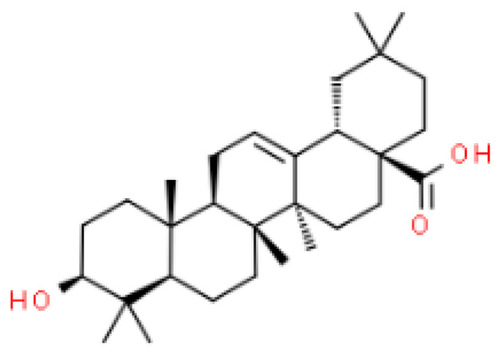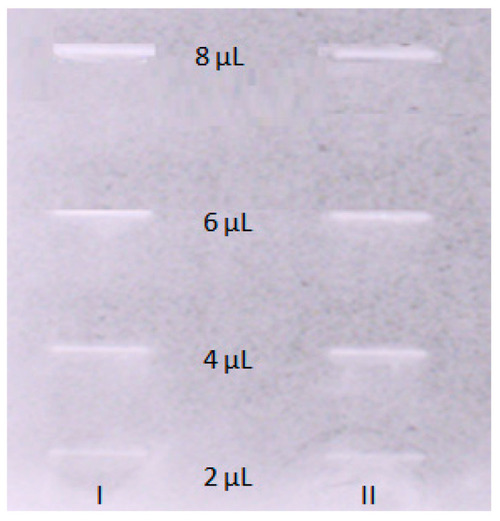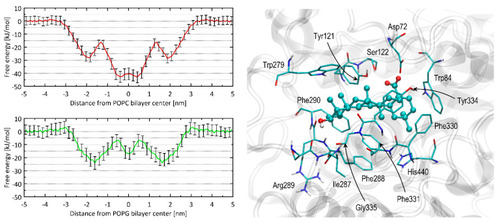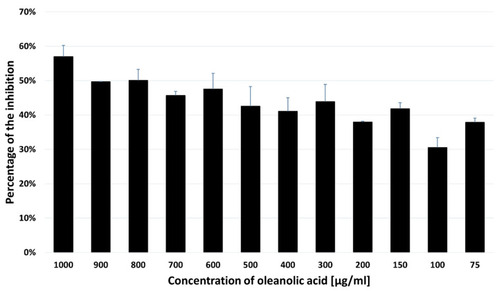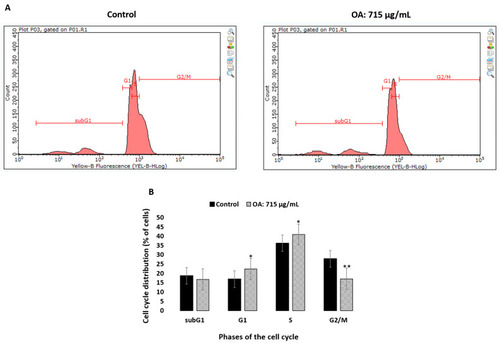- Title
-
Neuroprotective Properties of Oleanolic Acid-Computational-Driven Molecular Research Combined with In Vitro and In Vivo Experiments
- Authors
- Stępnik, K., Kukula-Koch, W., Plazinski, W., Rybicka, M., Gawel, K.
- Source
- Full text @ Pharmaceuticals (Basel)
|
Chemical structure of oleanolic acid. |
|
LogBB values calculated based on the QSAR model logkw values from the anisotropic membrane-like systems (ISRP, IAM, CHOL) and that calculated in silico using the ACD/Percepta software. |
|
TLC bioautography results for acetylcholinesterase inhibition visualized in daylight. The TLC plate shows different concentrations of OA. I—1st; II—2nd replications. |
|
( |
|
MTT results for the SH-SY5Y cells treated with OA. The OA IC50 value was calculated to be 715 µg/mL. The data are presented as the mean ± standard deviation (SD) of 3 independent experiments. |
|
Effect on the phases of cell cycle in the SH-SY5Y cells treated with OA. ( |
|
Representative photo of 4 dpf ( |

